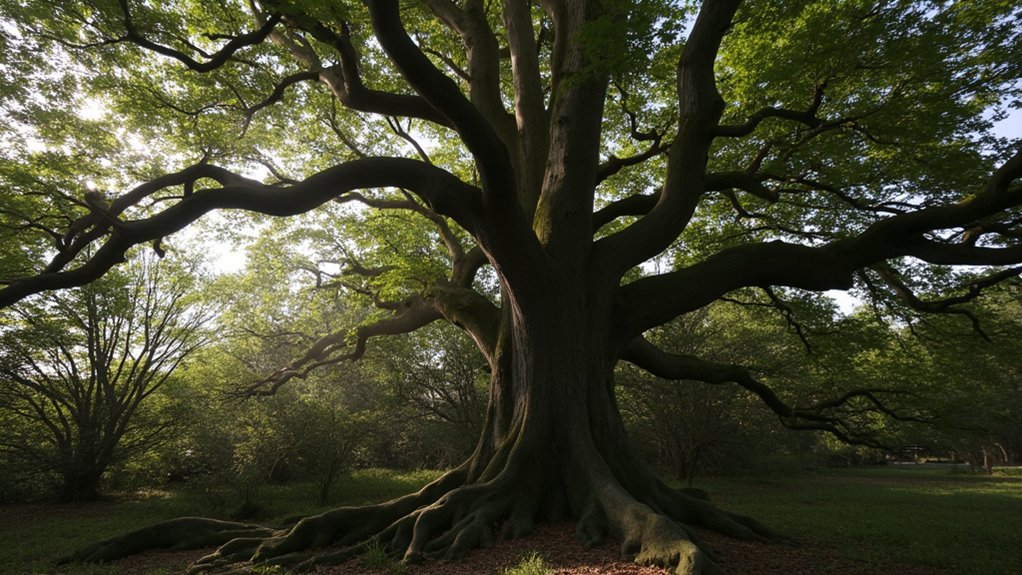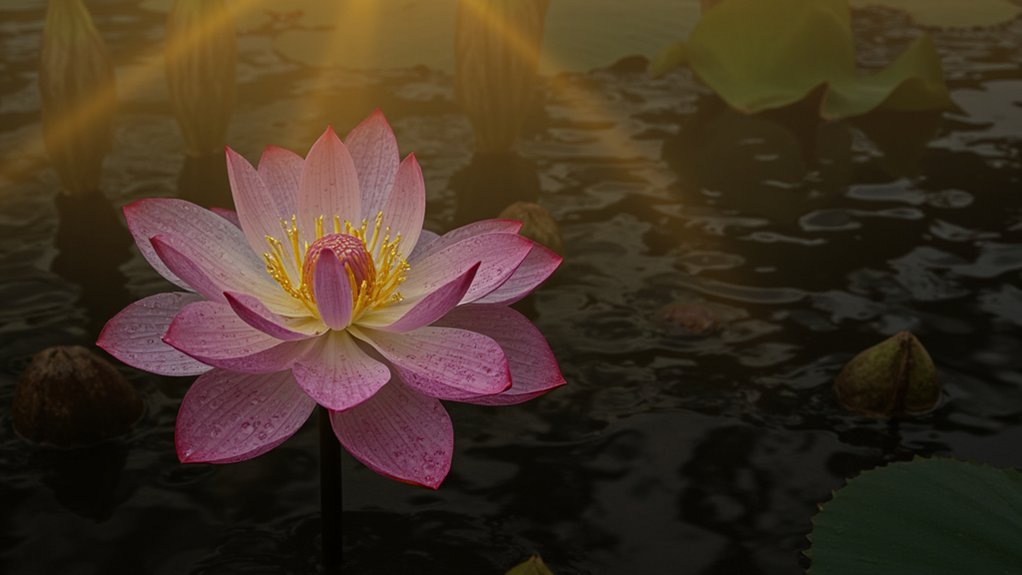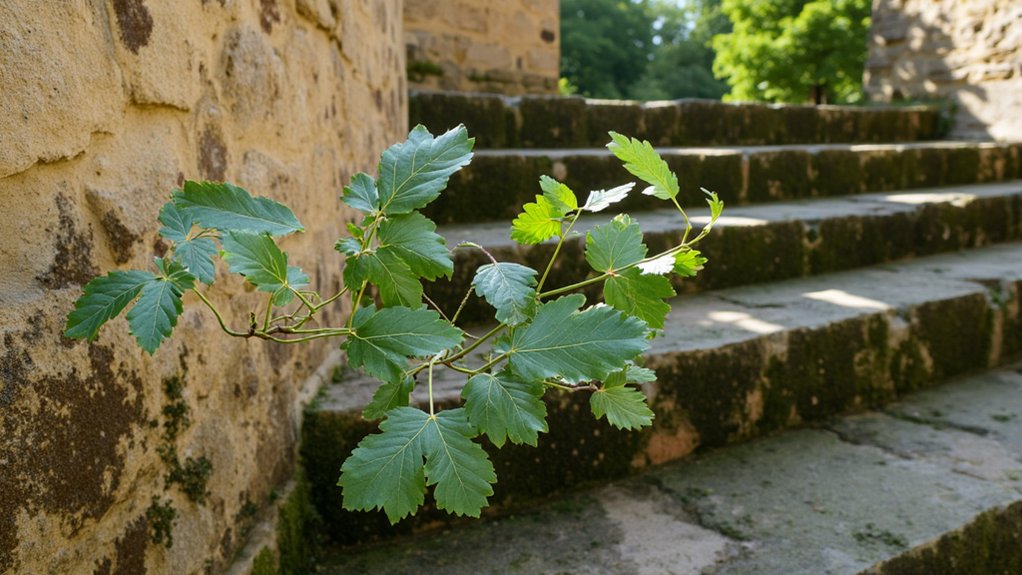You’ll discover that plants have shaped mythology for over 5,000 years, connecting humans to both divine domains and natural cycles. From the Norse world tree Yggdrasil, stretching 300 feet into the cosmos, to the sacred Egyptian lotus emerging from primordial waters, these botanical legends reveal how ancient cultures viewed their universe. Let’s explore the remarkable ways civilizations wove flora into their most profound stories.
Contents
Sacred Trees in Norse and Celtic Mythology

While many ancient cultures revered sacred trees, the Norse and Celtic peoples developed particularly deep mythological connections to specific species. You’ll find that the Norse considered Yggdrasil, a massive ash tree, to be the center of their cosmic universe, connecting nine different worlds through its branches and roots.
In Celtic mythology, you’ll discover that oak trees held supreme importance. The very word “druid” comes from the Celtic term “dru-wid,” meaning “oak knowledge.” They’d gather mistletoe from these oaks during sacred ceremonies, using golden sickles to harvest it during the winter solstice.
Divine Flowers in Ancient Egyptian and Hindu Traditions

Throughout the ancient world, flowers held deep spiritual significance, but nowhere were they more revered than in Egyptian and Hindu traditions. In Egypt, you’ll find the lotus dominating religious artwork, where it symbolized the sun god Ra’s emergence from primordial waters. The blue lotus, in particular, was prized for its connection to rebirth and enlightenment.
In Hindu mythology, you’ll discover the sacred lotus serving as the throne of Brahma, the creator god. You’ll also encounter marigolds, which devotees still use today in religious ceremonies and offerings, believing they’ll please the deities and bring blessings to their homes.
Mystical Plants of Greek and Roman Legends

Ancient Greek and Roman myths feature an array of enchanted plants with extraordinary powers. You’ll find narcissus flowers, which sprouted where the vain youth Narcissus died, and myrtle, sacred to Venus. The laurel tree emerged when Apollo’s beloved Daphne transformed to escape his pursuit.
In these classical tales, you’ll discover mandrake root, believed to scream when pulled from the ground, and asphodel, the ghostly flower of the underworld. The Greeks associated hellebore with Melampus, who used it to cure madness, while ambrosia served as the immortality-granting food of the gods.
Sacred Flora in Native American Creation Stories
Many Native American tribes trace their origins to sacred plants that played essential roles in their creation stories. You’ll find corn, tobacco, and sage appearing prominently in these narratives, each carrying deep spiritual significance.
The Navajo believe they emerged from a sacred reed, while the Hopi tell of their ancestors climbing through a hollow sunflower stalk to reach Earth’s surface. In Cherokee tradition, you’ll learn how corn, beans, and squash – the “Three Sisters” – sprouted from the body of the first woman, providing sustenance and teaching agricultural harmony.
These plant-centered stories continue to guide Native American cultivation practices, ceremonies, and cultural identity today.
Powerful Plants in Asian Religious Traditions
Sacred plants take center stage in Asian religious traditions, where you’ll find lotus flowers, bamboo, and bodhi trees deeply woven into spiritual practices and teachings.
In Buddhism, you’ll encounter the lotus flower as a symbol of enlightenment, rising pure from muddy waters. The bodhi tree, where Buddha achieved enlightenment, remains a focal point of meditation and pilgrimage sites throughout Asia.
Chinese traditions revere bamboo for its resilience and flexibility, while Japanese Shintoism honors the sakaki tree as a bridge between earthly and divine domains. You’ll also find ginkgo trees surrounding temples, where they’ve served as guardians for over 1,000 years.
Magical Herbs in Mayan and Aztec Beliefs
Throughout pre-Columbian Mexico, powerful herbs played a central role in both medicinal practices and religious ceremonies. You’ll find that sacred plants like peyote, morning glory, and tobacco were carefully cultivated for their ability to connect shamans with the spirit world.
Aztec healers, known as ticitl, would combine herbs like Mexican marigold and copal into complex mixtures. They’d often prescribe these remedies alongside ritual cleansing ceremonies to treat both physical and spiritual ailments.
In Mayan culture, you’d see sacred herbs burned as offerings to the gods, particularly during important calendar dates and astronomical events. Shamans would gather specific plants by moonlight, believing this enhanced their magical properties.
